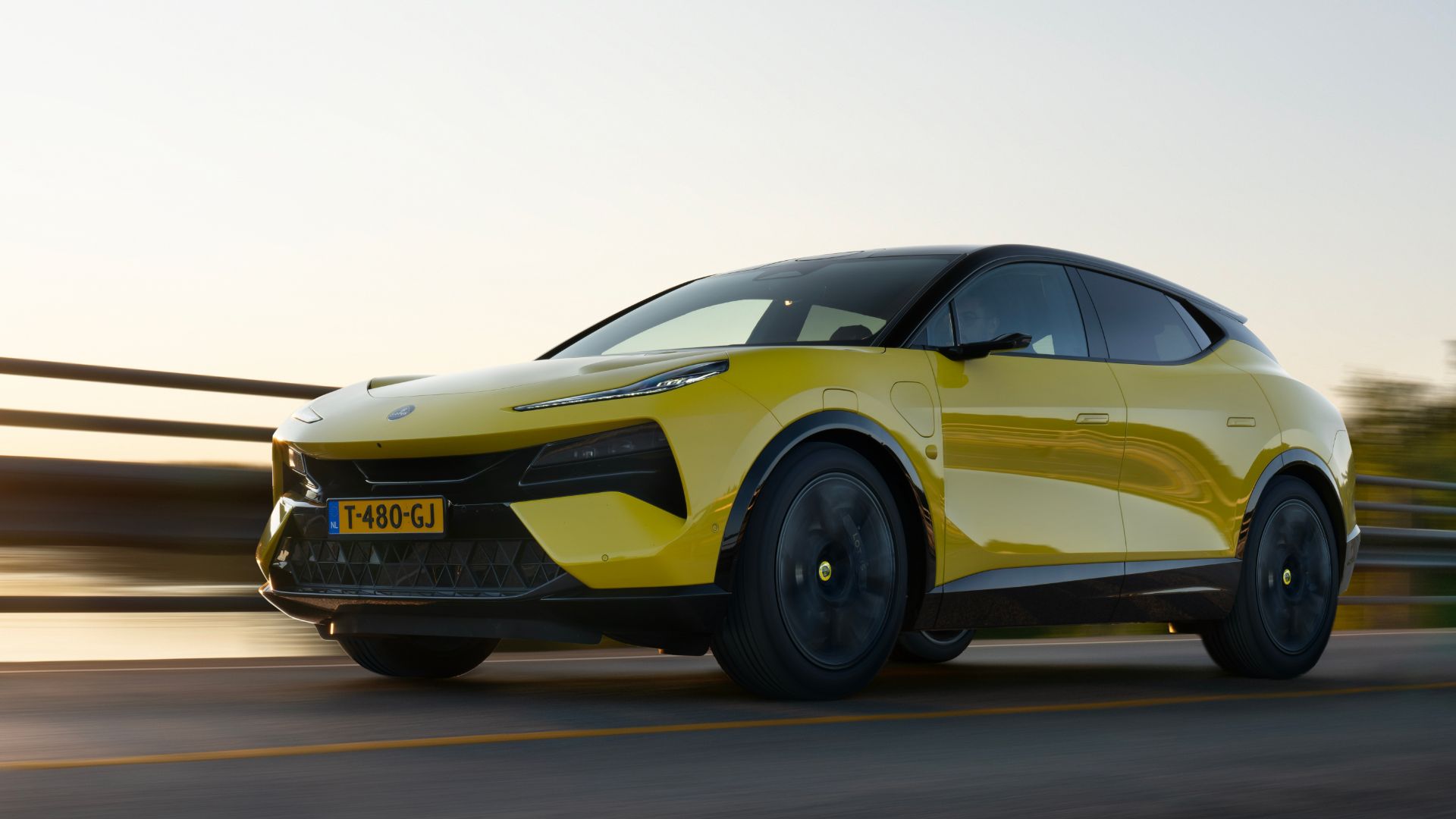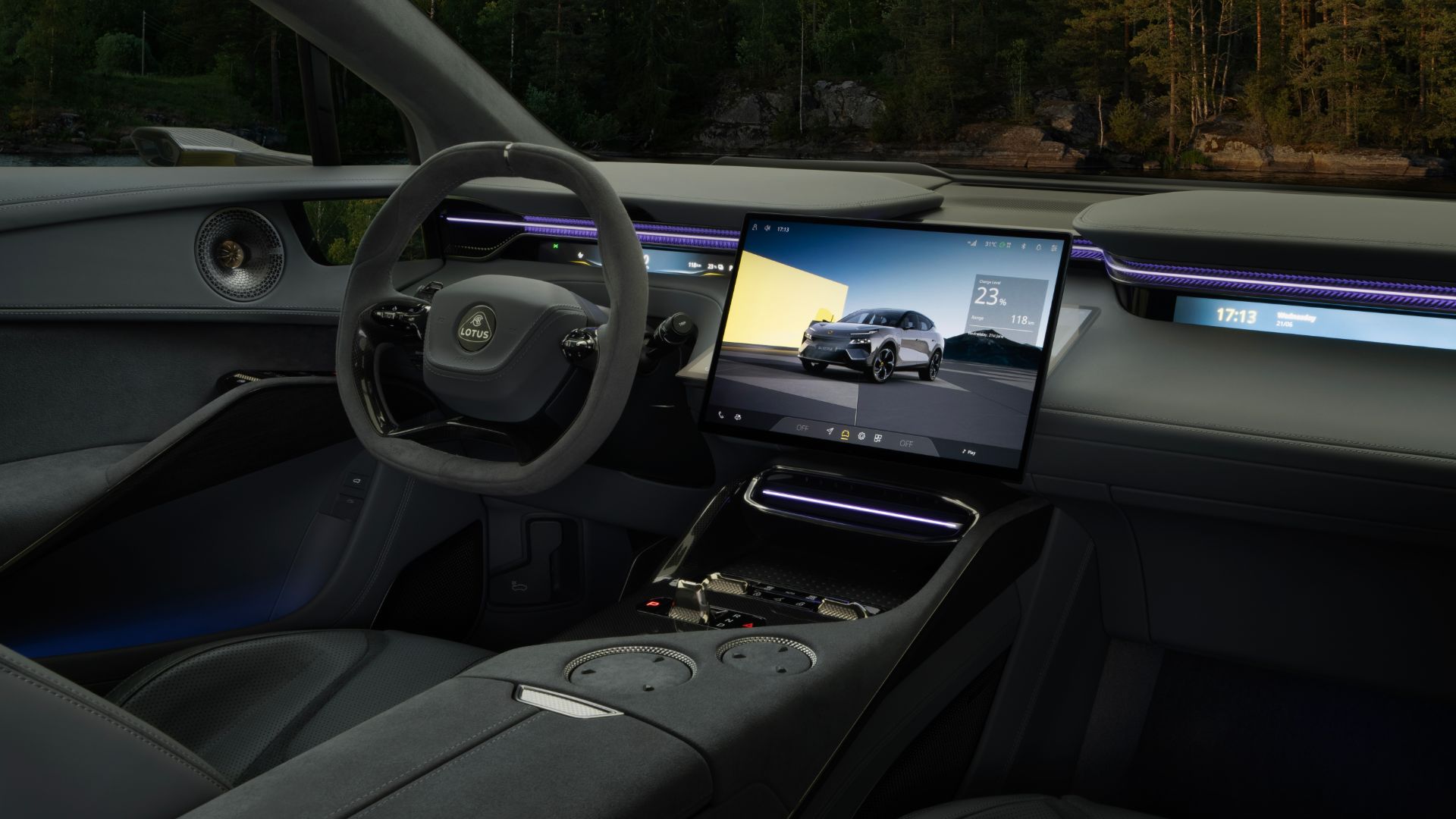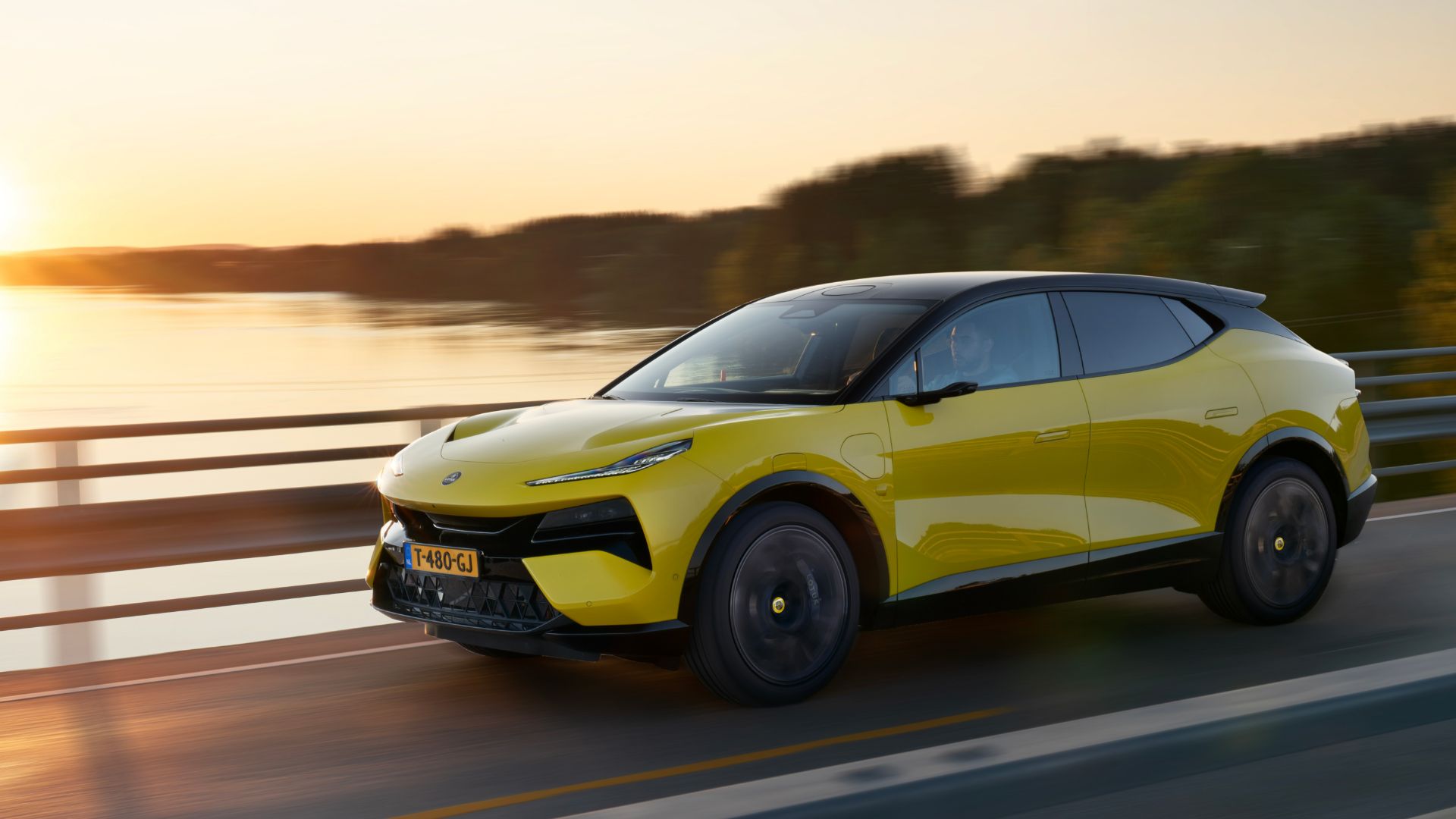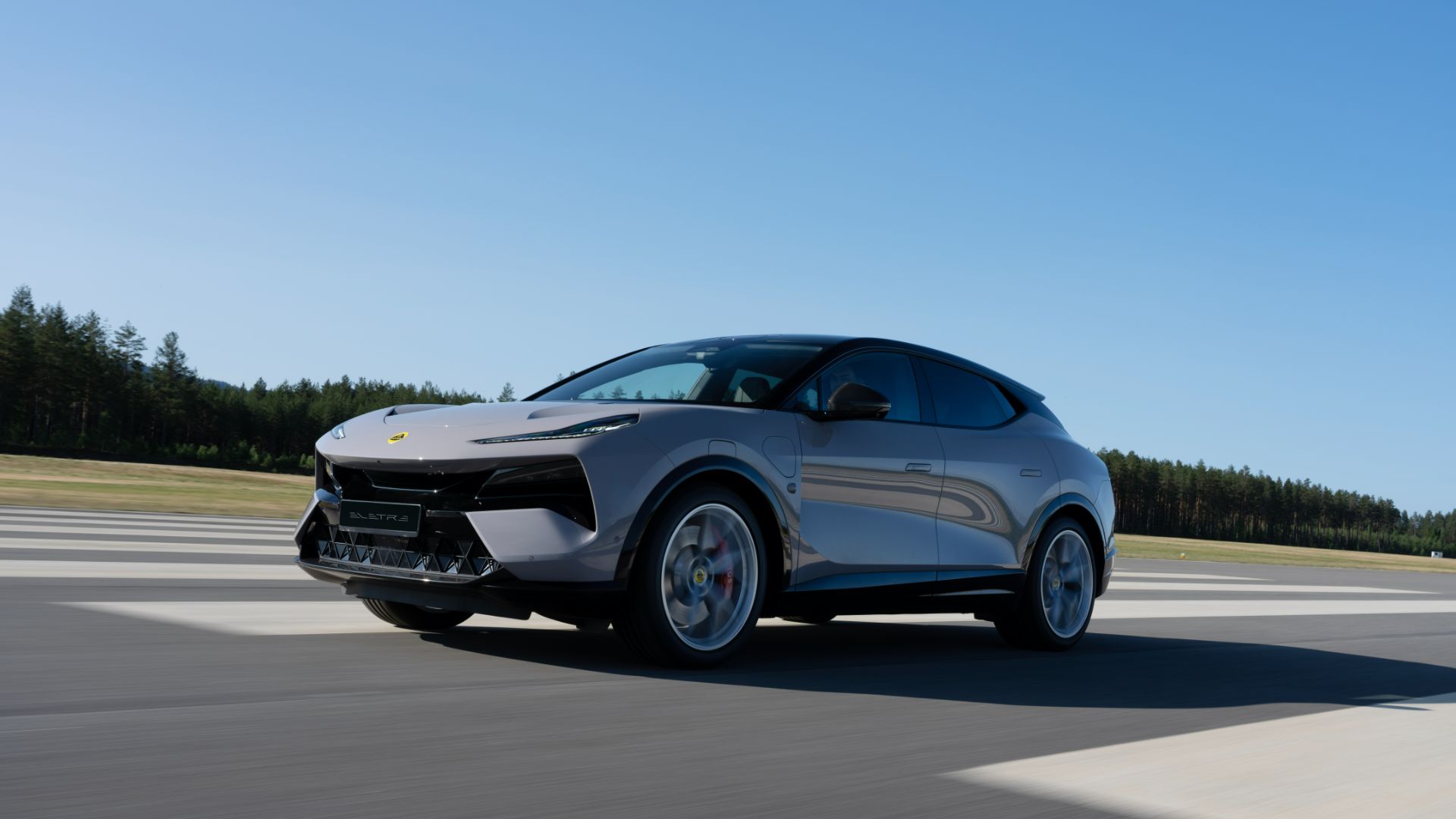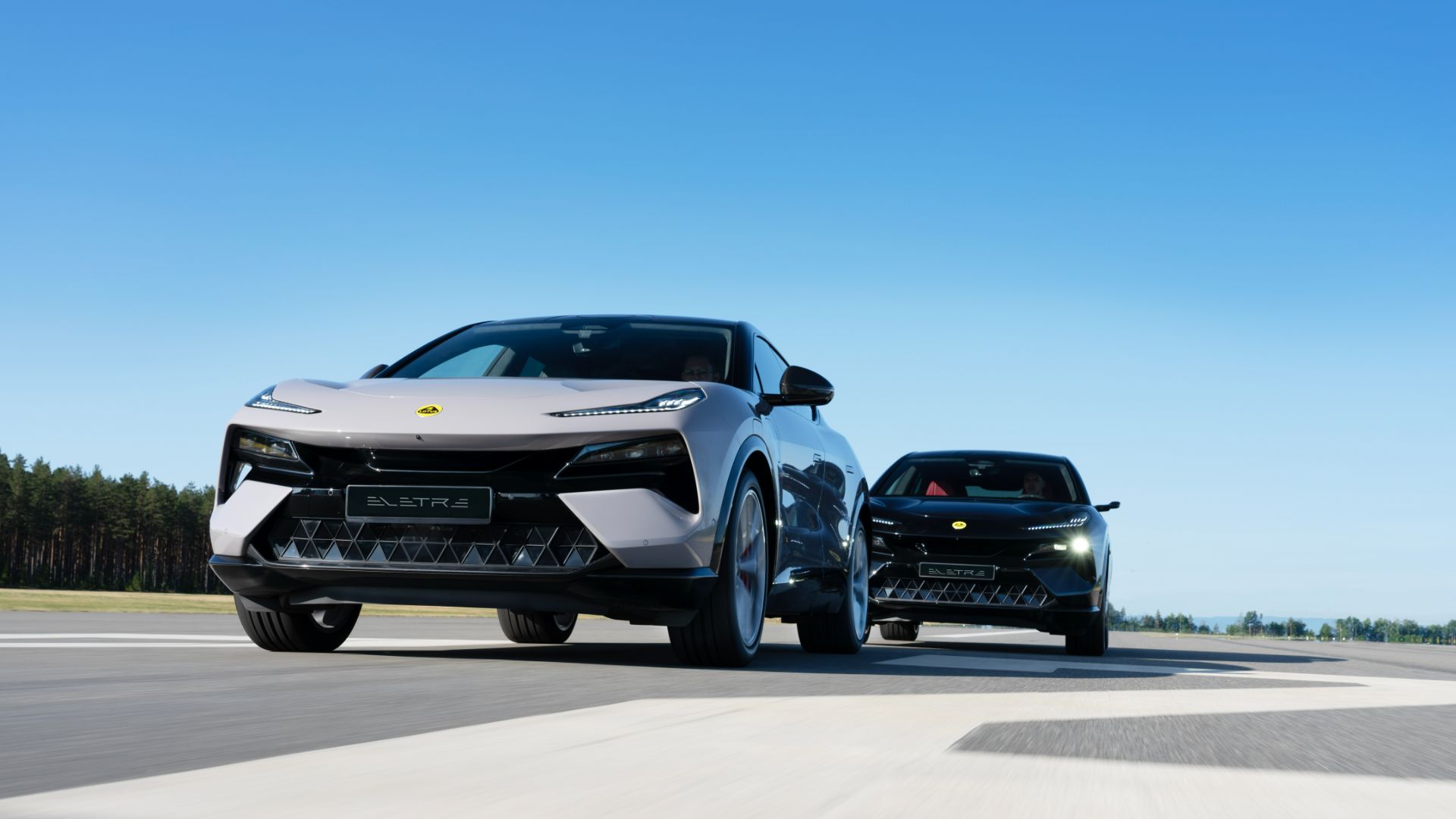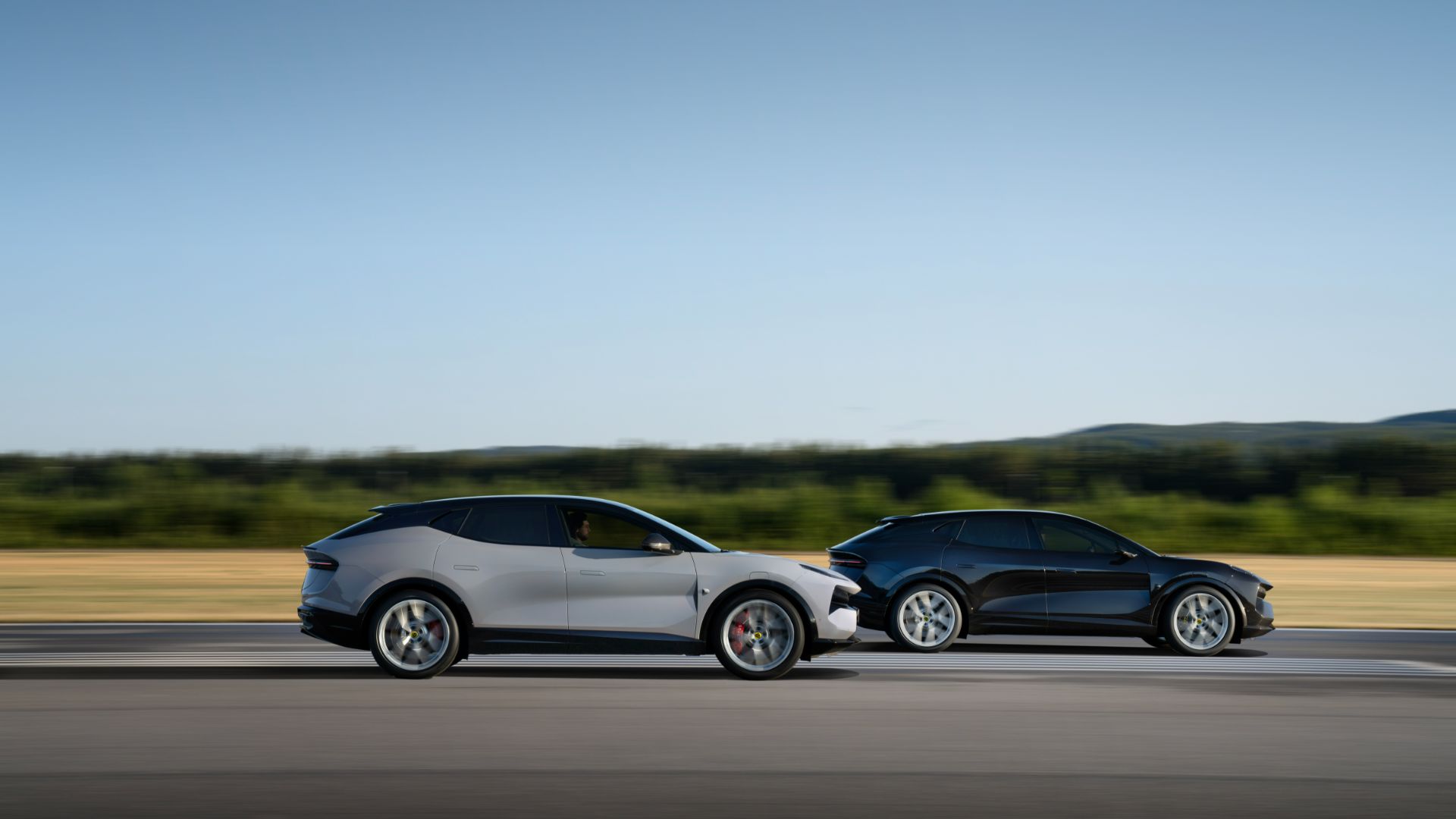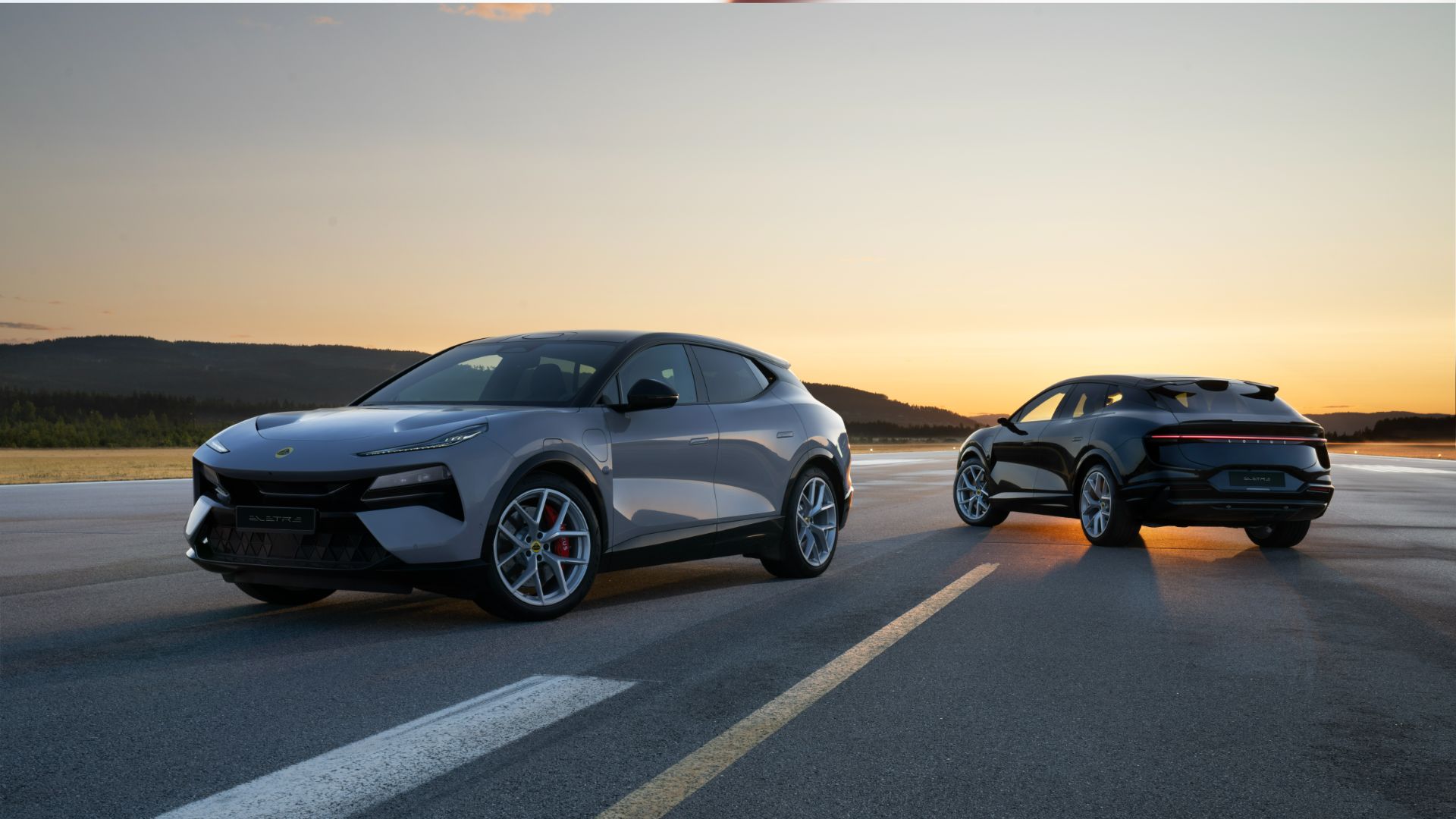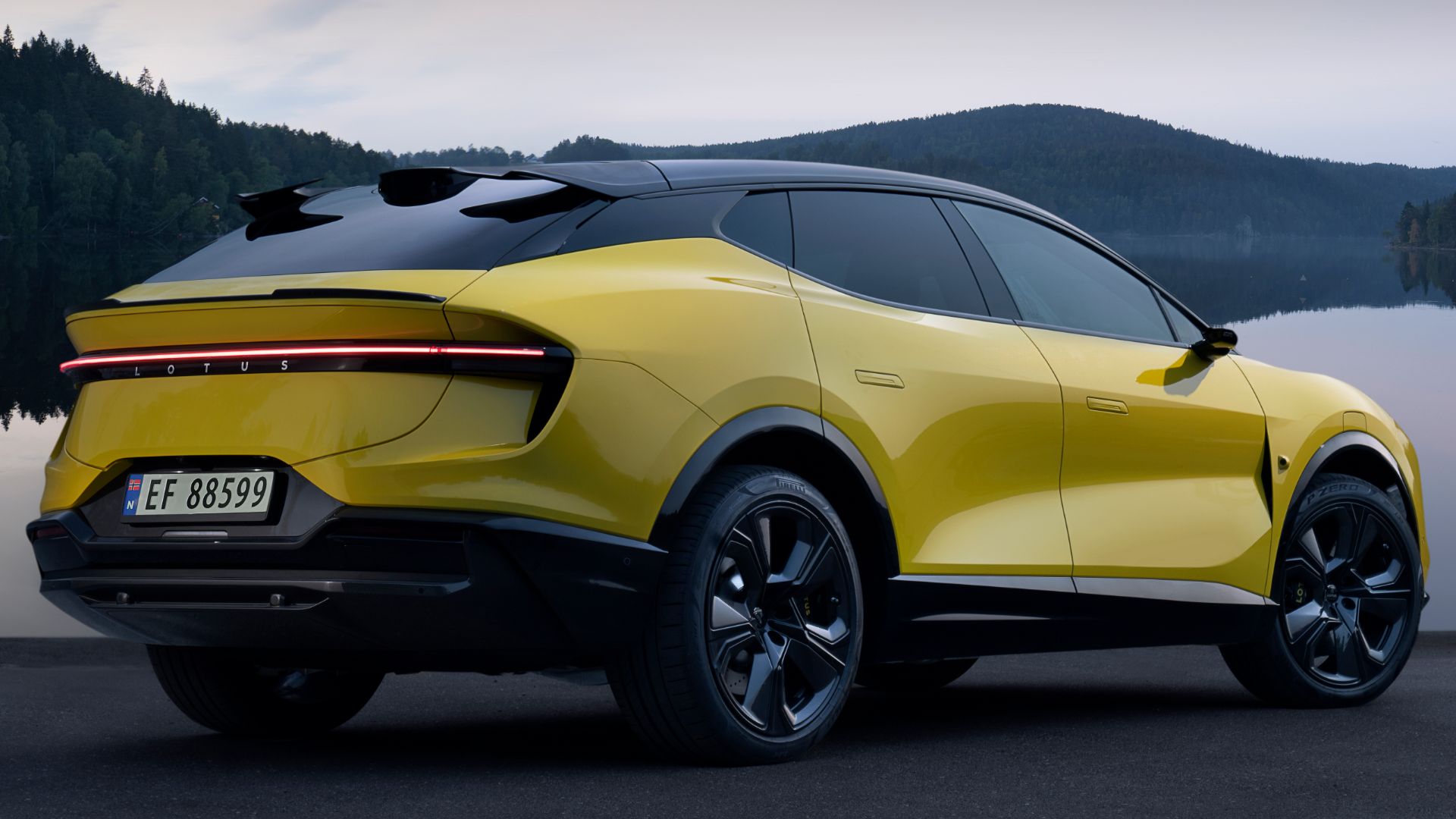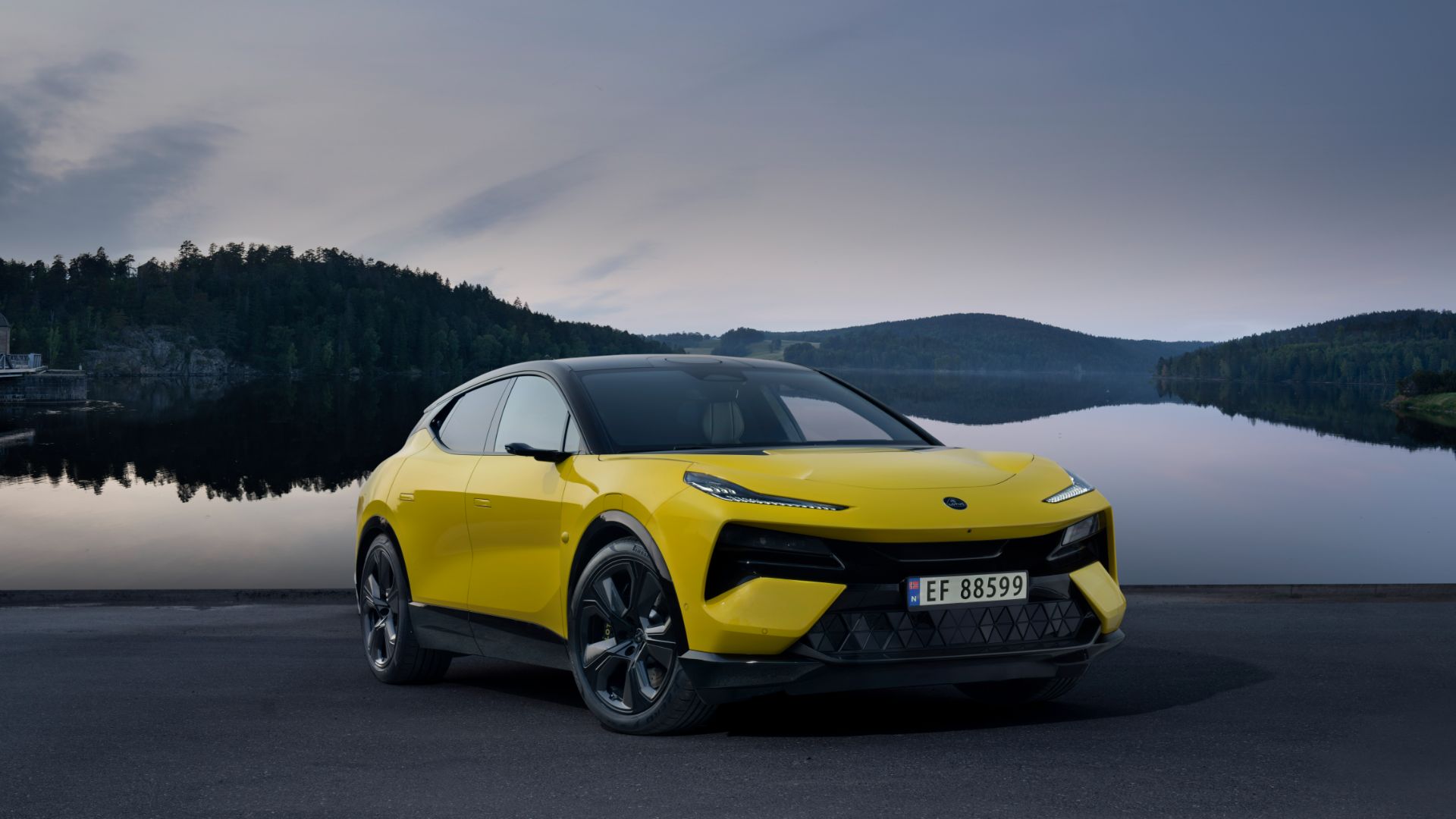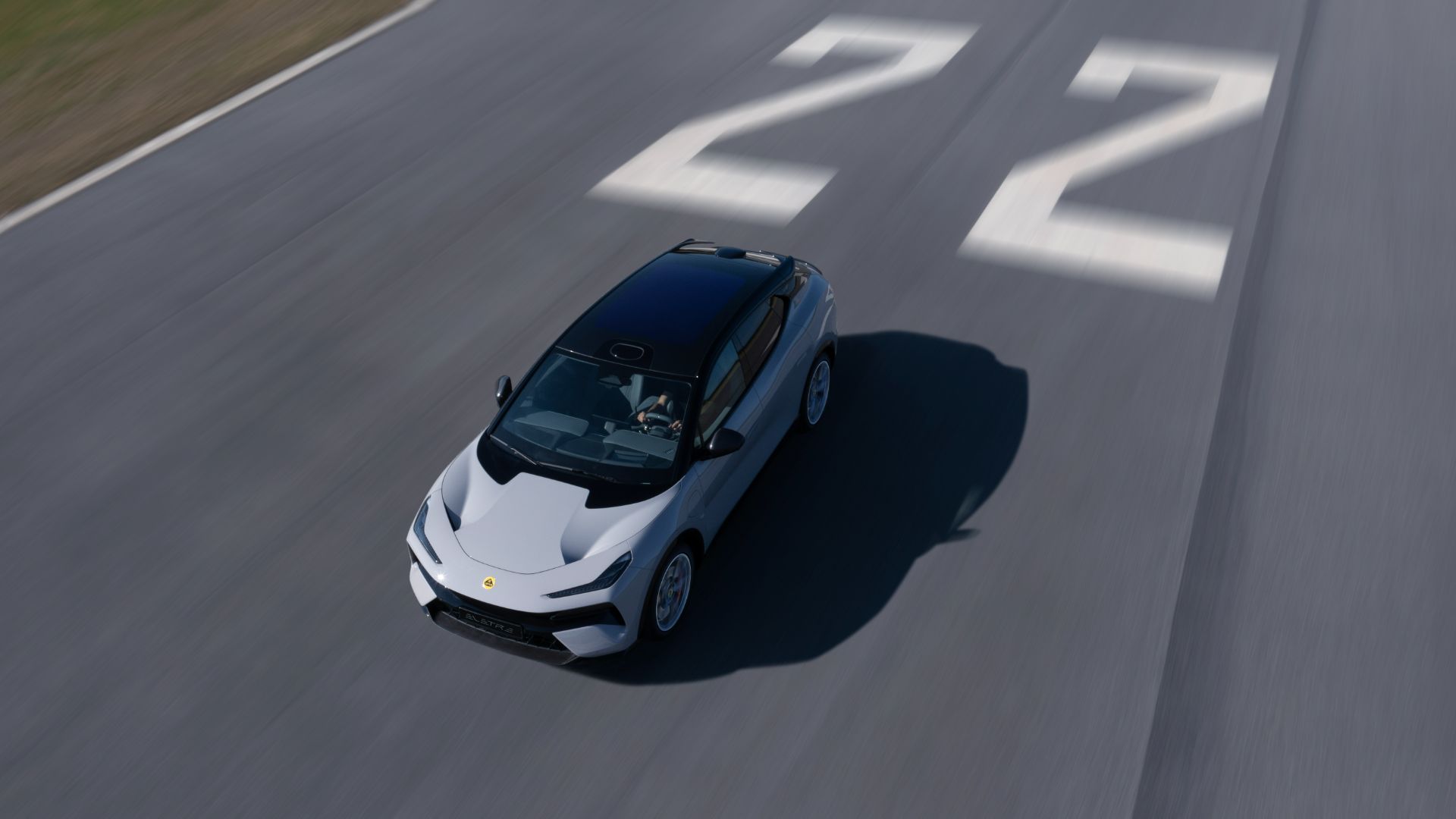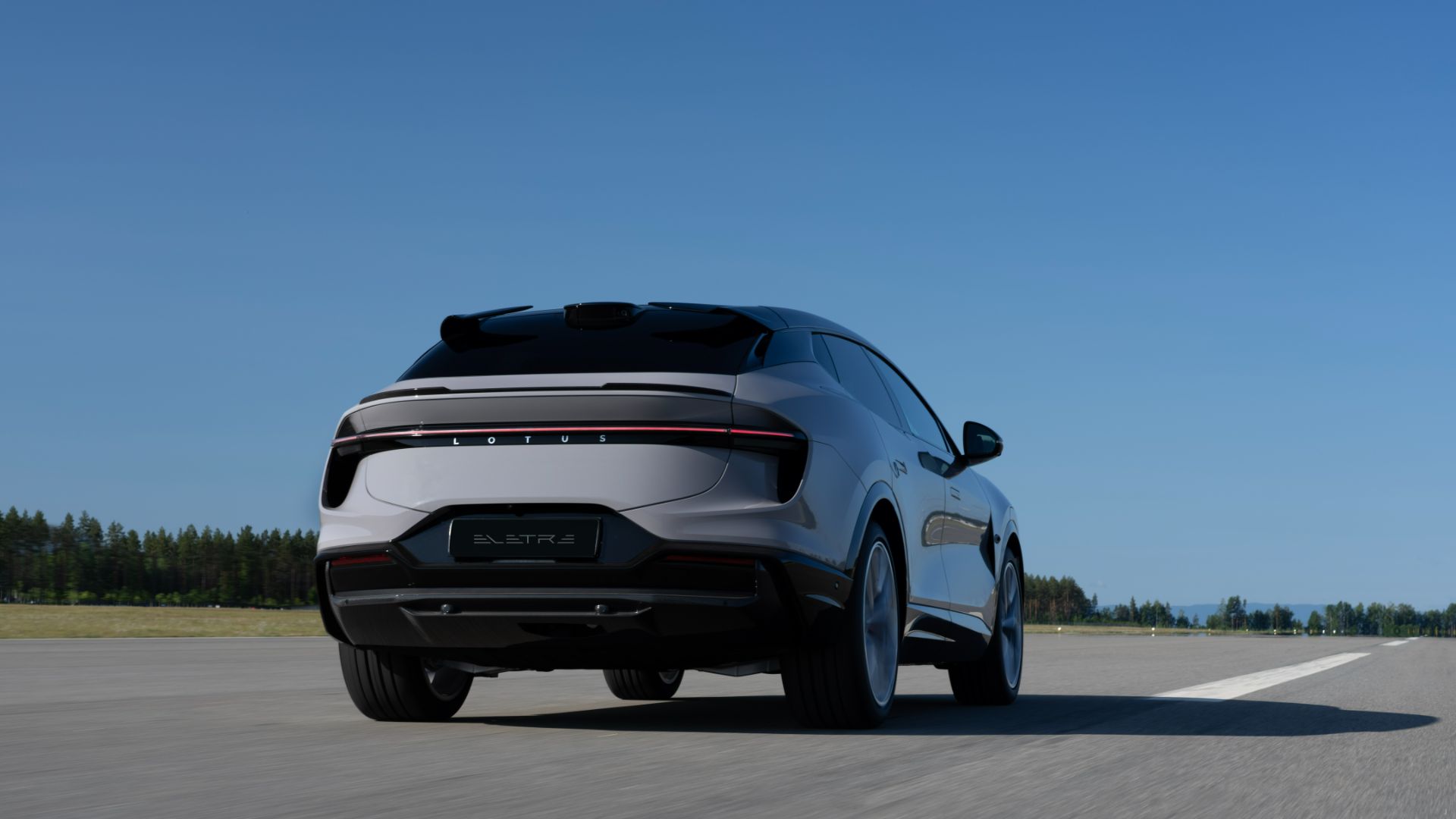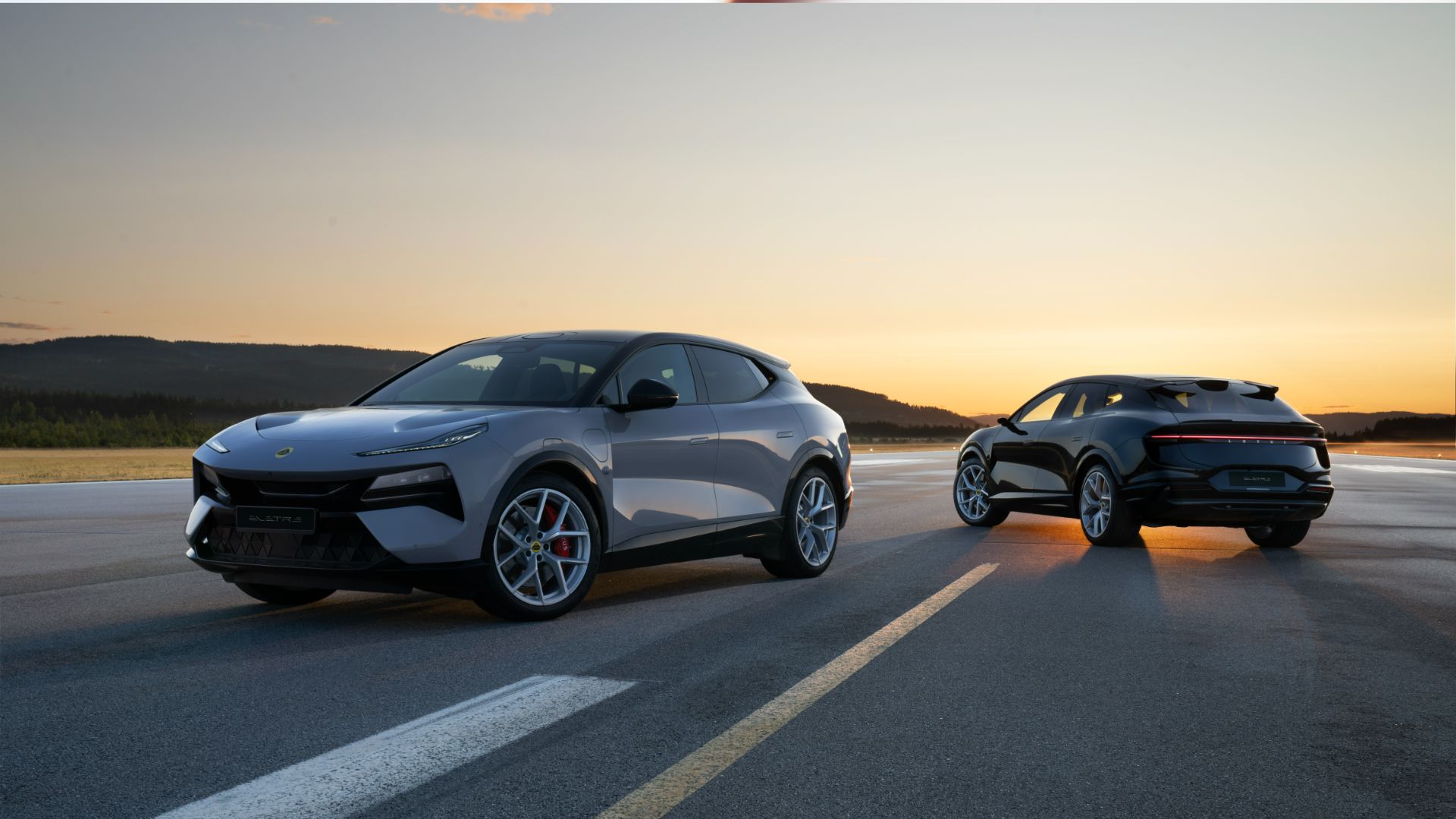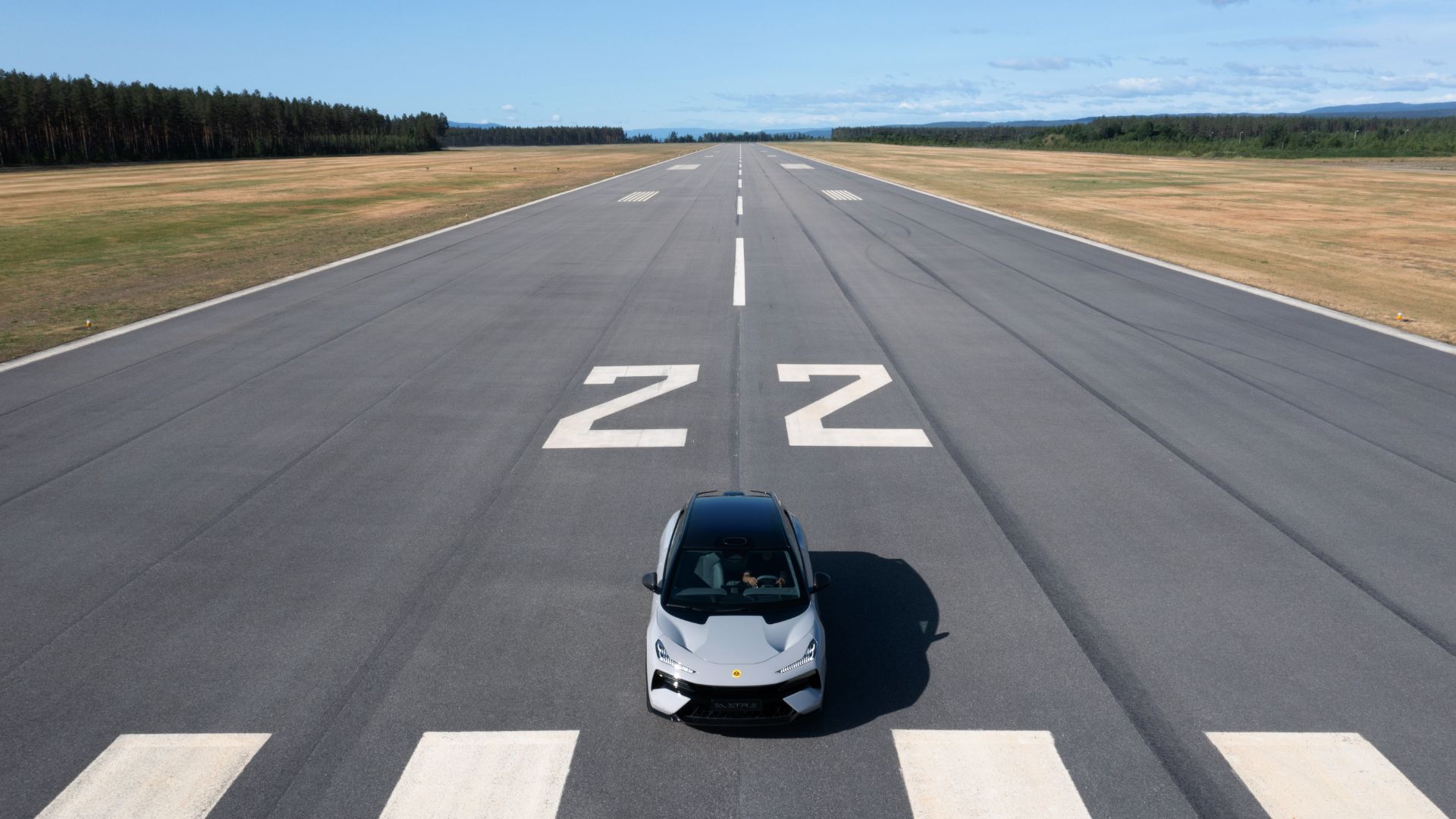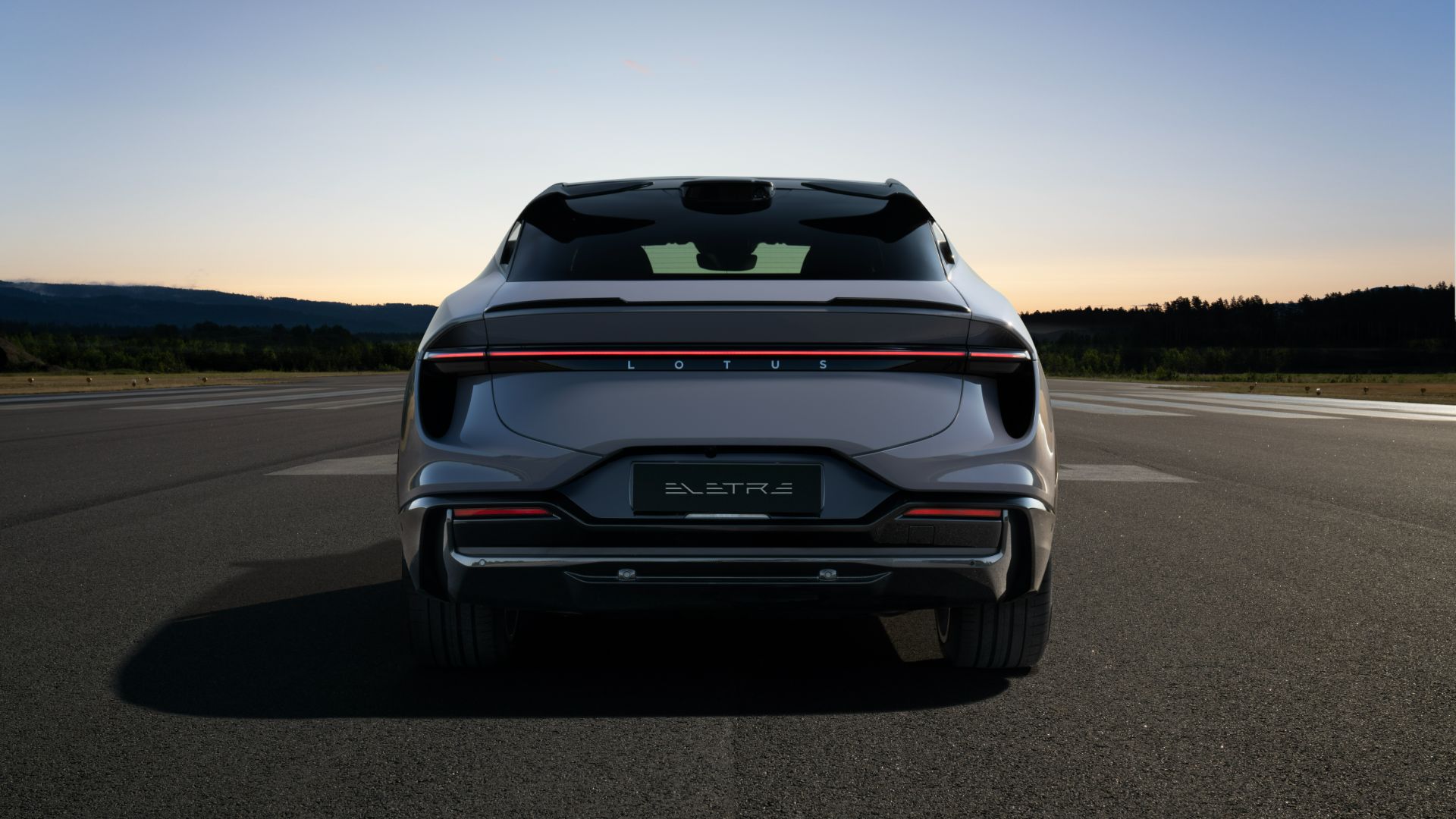Lotus used to bolt together fragile cars using fibreglass, British Leyland leftovers and a slightly blinkered sense of optimism. Back then, using the words ‘Lotus’ and ‘electric’ in the same sentence would have inevitably meant Lots Of Trouble, Usually Serious.
The new Eletre represents a different kind of trouble: a clear and present danger to Porsche – perhaps even Lamborghini, too. How did that happen?
In truth, everything about the Eletre is different. It’s a tech-laden SUV instead of a skeletal sports car. Fully electric, rather than powered by petrol. And made in Wuhan (yes, that Wuhan), not in sleepy Norfolk.
Lotus took 70 years to build its first 100,000 cars; now, buoyed by massive investment from Geely – the Chinese conglomerate that also owns Volvo – it aims to shift that number annually by 2028. The Eletre is central to this goal.
Sound and vision
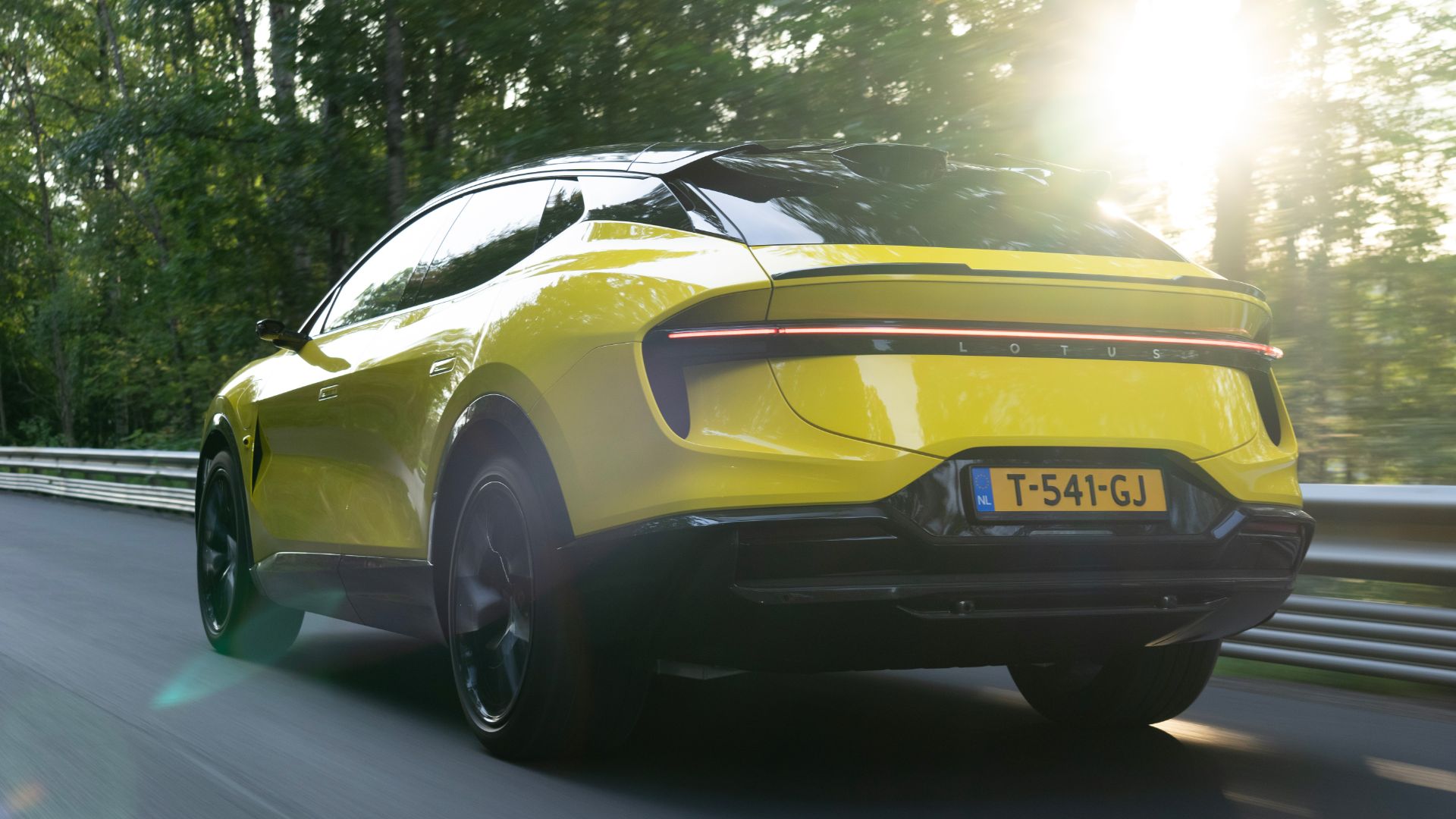
The range kicks off with the standard Eletre at £89,500. It uses a 112 kWh battery and twin electric motors for all-wheel drive, serving up 603hp, 0-62 mph in 4.5 seconds and 373 miles of range. The Eletre S (£104,500) offers the same performance with more luxury, including soft-close doors, ambient interior lighting and a ground-quaking 23-speaker KEF audio system (the best we’ve heard in any car).
Then there is the flagship Eletre R (£120,000). This adds a two-speed transmission and larger motors for a faintly absurd 905hp, 0-62mph in a supercar-slaying 2.95 seconds and a range of 304 miles. It also has an arsenal of active chassis technology, including rear-wheel steering, anti-roll control and a dedicated Track driving mode.
Lotus has lined up an ‘R’, an empty airfield and a circuit of sacrificial traffic cones for us later. First, it’s time for a road drive in the middling Eletre S. With ‘porous’ design inspired by the Evija hypercar, it certainly has plenty of presence – especially in radiant Solar Yellow. An active rear spoiler can more than double downforce if needed, while slimline high-definition cameras take the place of bulky door mirrors. An aerodynamic SUV is a contradiction in terms, of course, but the Eletre’s drag coefficient of 0.26 is slippery for a car of this type.
Moonage daydream
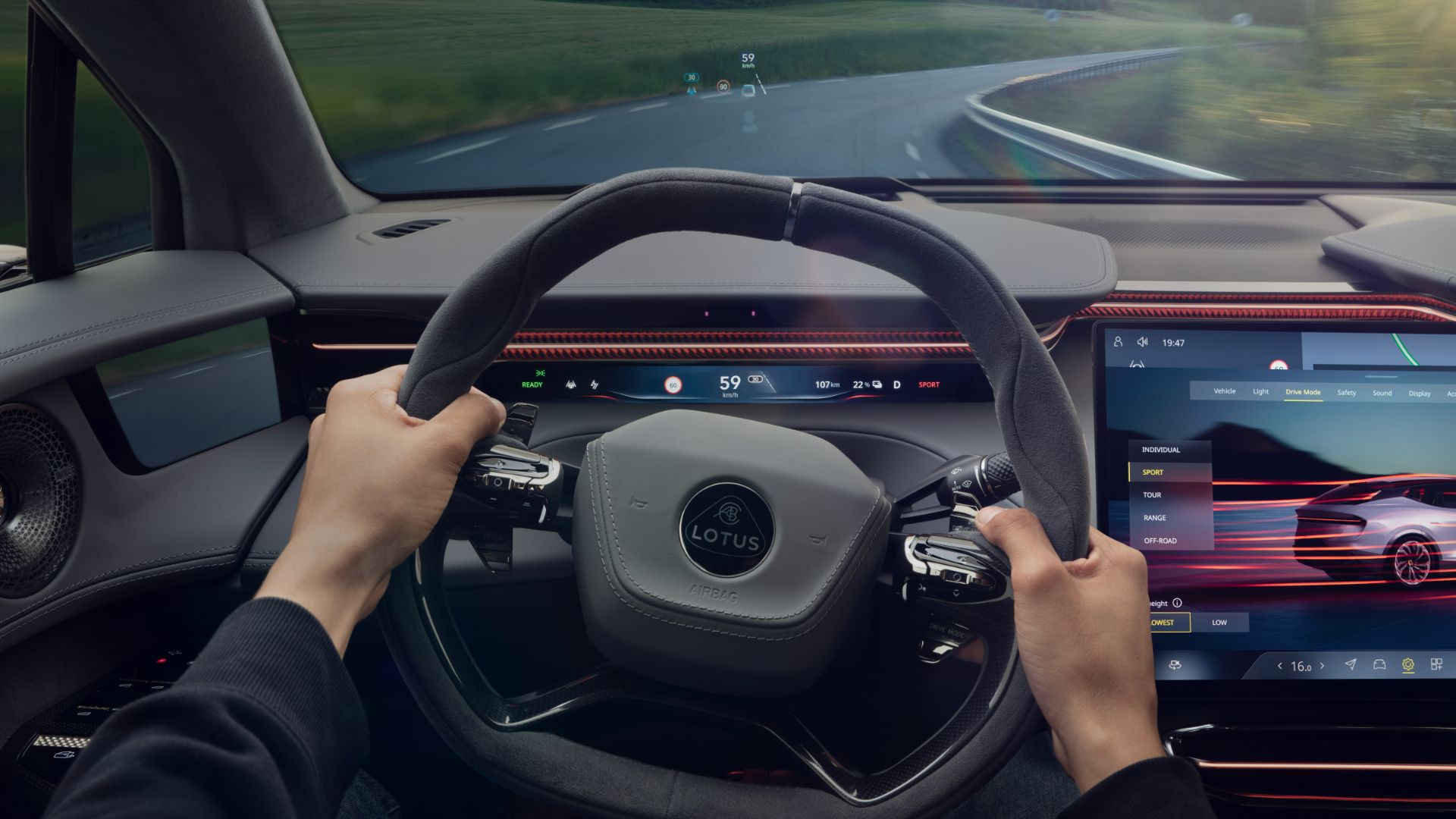
Inside, there’s a dazzling array of infotainment, thanks to 5G connectivity and the new Lotus Hyper OS media system. You’ll find up to seven touchscreens, including the main 15.1-inch OLED interface and a Ferrari-style passenger display to show your partner exactly how fast you’re going (probably best to switch that one off). The tech looks sharp and feels intuitive, including a dedicated Eletre smartphone app and a navigation system that predicts energy use, preconditioning the battery before you arrive at a charger. Apple CarPlay and Android Auto connectivity are coming soon, via an over-the-air update.
As you’d hope for an SUV with a similar footprint to a Mercedes-Benz S-Class, space for passengers and their luggage is plentiful. That said, our Eletre had the option of two individual rear seats that don’t fold down, so we’d stick with the conventional three-person rear bench. The gold-effect trim – also optional, thankfully – looks decidedly more Nanjing than Norwich, but most surfaces are swathed in tactile Alcantara and quality edges close to Porsche standards (and all without a Morris Marina column stalk in sight).
On the road, the Eletre’s air suspension combines a comfortable, family-friendly ride with reassuring poise and huge reserves of grip. The much-vaunted ‘Lotus DNA’ feels somewhat smothered beneath 2.5 tonnes of SUV – more than three times the weight of an S1 Elise – and you can sense the electronics doing some literal heavy lifting. We found the default Tour driving mode offers the best sense of feedback and flow; switching to Sport makes the car feel abrupt and over-caffeinated.
Golden years
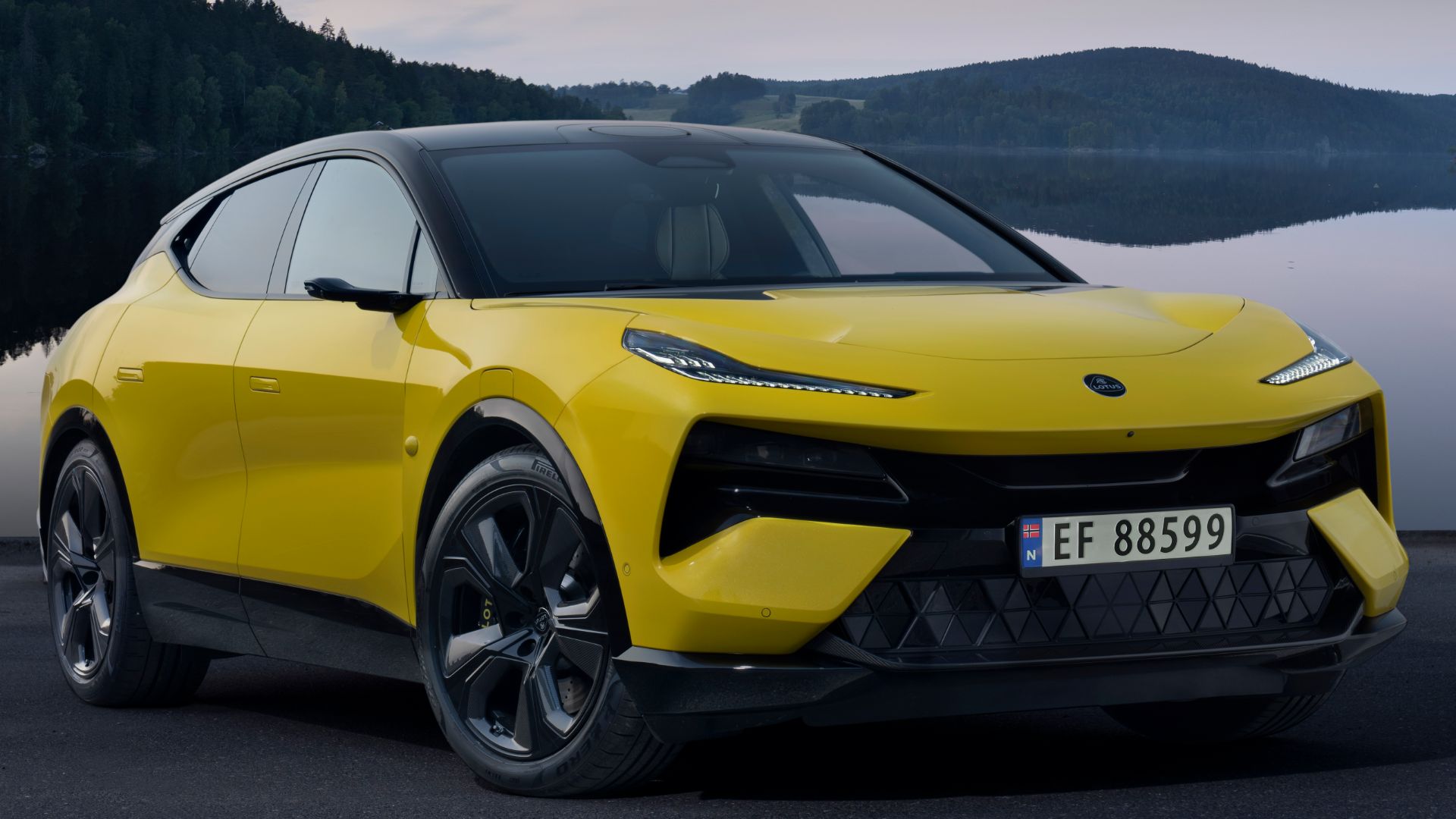
Even the standard Eletre is hardly slow, but the ‘R’ can embarrass a Lamborghini Urus Performante or Aston Martin DBX707 (and costs two-thirds of the price). A full-bore launch control start leaves your stomach behind like the drop on the roller coaster – it’s not something I’d recommend soon after lunch.
As we drive across to the circuit, the sky darkens and stair-rods of rain begin lashing the runway. Yet the adverse conditions only serve to reinforce the Eletre’s inherent balance and tenacious traction, and allow some Lotus magic to shine through.
This is an easy vehicle to admire, but a harder one to love, at least for this old-fashioned Lotus diehard. Yet it’s also exactly what the company needs, to survive in this brave new electrified world and, like a certain marque from Stuttgart, generate the profits to continue building brilliant sports cars. An electric saloon and a smaller SUV will soon follow, but the Eletre seems a promising start. And a reason for genuine optimism.
ALSO READ:
Lotus Evija Fittipaldi celebrates 50 years of ‘greatest ever F1 car’
1983 Lotus Esprit S3 review: Retro Road Test
